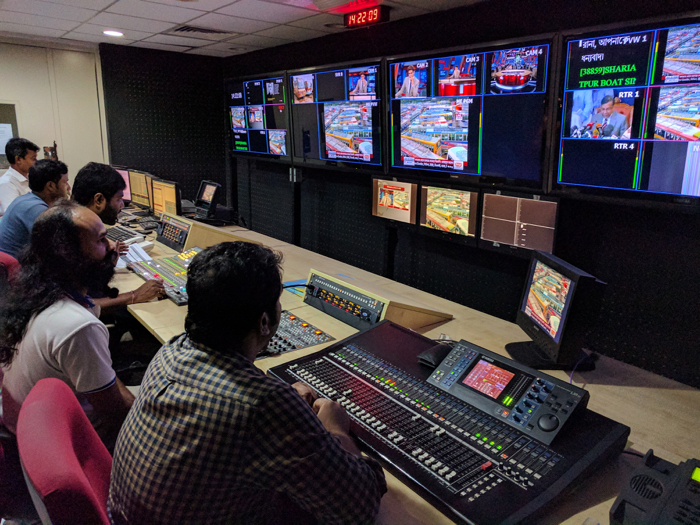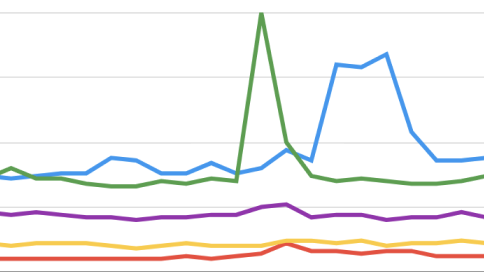What is the 24-hour Breaking News? The Way Nonstop Reporting Disrupted the Media
Just ever thought how come news never sleeps, even at 2 a.m.? That is the 24-hour news machine. It is that system through which you can get the news, updated and circulated 24 hours a day and hence are informed day and night. You will find news stations open and eager to broadcast whether there is political shake up, celebrity scandal, or natural disasters.
We also do not wait in this digital world until the evening update. We are instead being served with real-time headlines brought to our phones. This continuous twenty-four-hour market has revolutionized journalism- and media consumption. So here is what it is, how it works and what it implies about truth, speed and social life.
Table of Contents
What is the 24 Hour News Cycle?
The 24-hour news cycle is the daily flow of news coming along with production and distribution of news 24 hours per day and 7 days per week. That started when 24-hour cable news networks were launched, and gained speed with digital updates to news, social networking sites and mobile alerts.
This is in contrast to conventional reporting which was more or less made part of the routine (daily news, a newspaper in the morning or 6 p.m. News). This means that in this type of set-up, the news is always on. Major events are not reported alone once again, instead they are updated, analyzed and reposted in reality.
Speed, competition, and demand are what drives this model and it has irreversibly altered the way media operates.
The Important Aspects of the 24 Hour News Circle
1. On-going Real-Time News Reportage
- Real-time journalism is the backbone of the 24-hour news cycle. The media is always at a standby. Good, bad news, it can be a disastrous plane crash, or sports upset, an illicit affair in parliament, newsrooms turn it out with instant messaging.
- News rooms work on shifts to give continuous coverage.
- Games and news applications provide real-time information.
2. Frequently Breaking News Coverage Repetitiously Takes Place
When such a major event breaks, breaking news coverage process begins:
Breaking alertage → first on the ground reportage → updates → corrections → analysis
It can be repeated more times in a day whenever new facts arise.
3. Platforms of rolling out News Coverage
News no longer goes on a single channel. It rolls the cross:
- TV broadcasts
- Blog and websites
- Social media timelines
- Radio stations
- Push notifications
The news coverage is live in rolling fashion, which breathes life to the story – this story is continuously changing.
4. Massive emphasis on breaking News and emerging stories
Headlines that are urgent are attractive. Story development keeps people on the edge:
- Breaking: Bomb hit in the city centre.
- The breakdown is as follows; Developing; Sources report that suspects may have been identified.
This model raises the traffic and participation, yet may begin to splurge the boundary between reality and conjecture.
5. Many Pressures on Reporters to be Fast on the Release
In the 24-hour cycle, speed is a very frequent victor.
- Not knowing all the facts, journalists hurry to come first.
- Competition accelerates the reporting, not necessarily reporting quality.
6. Misinformation or Speculation Increase Risk Risk of More
There is a price tag attached to fast-paced reporting:
- Errors and corrections are common.
- The borderline between fake news vs breaking news becomes difficult to notice.
- The verification of news is a way through which news organizations connect with the credibility they had established but it comes late at times.
📊 Table: Key Features of the 24-Hour News Cycle
| Feature | Description |
| Real-time reporting | Live updates as events occur |
| Rolling news coverage | Continual updates across multiple platforms |
| Frequent breaking alerts | Push notifications, banner headlines throughout the day |
| Always-on newsroom staffing | Reporters and editors work around the clock |
| Multi-platform distribution | TV, web, app, podcast, social media |
| Developing stories evolve fast | Information builds and changes rapidly |
Effect on News Consumption
The news cycle of 24 hours reshaped informational consumption. Here is how to go about it:
quicker Newsroom Response Time
- Newspapermen and camera crews are into action.
- You can have live shots of helicopters, professional analysis, and latest updates as the events take place.
Headline Little, Reporting Nothing
- Quality can easily be defeated by quantity.
- The audiences watch dozens of headlines without many details or follow-ups.
- Investigative journalism, especially the long-form is poor at competition.
Bite-Sized-Updates
- Push notifications provide news in the form of 140-word summaries.
- Easy to understand- yet tends to be lacking in detail.
Engagement Through the Audience vs. Accuracy
- News has become a discussion– you have the ability to respond, share and comment.
- However, this interactivity encourages outlets to race to publish even before ensuring that everything is okay.
Pros and Cons Table of 24-Hour News Cycle:
Positive Impact Negative Impact
Easy access to an emergency information Fastness is the cause of mistakes
A 24-hour coverage in real-time News fatigue and news overload
Great involvement with online and social media Superficial and superficiality, flatness, in-depth
Real time crisis message Fakes assimilate at a higher speed

What Powers the Cycle? – Journalism Terms
What about the term driving this system? Let us break it down:
- Crisis Communication: Providing correct urgent information in times of emergencies.
- Digital News Updates: Frequent update of content on the Web and apps.
- News Alert System: Push messages that will be activated by the important events.
- Rolling News coverage: Continuous coverage of one event.
- News Verification Process: Fact-check under pressure.
- The Media Treatment of Breaking News: Responses to news on a deadline.
- Fake News vs Breaking News: How to separate fact and viral fiction.
- Breaking Stories, Developing, Follow-up, Feature
The Role of Social Media and Digital Technology
Social sites have turbo charged the 24 hour news cycle:
Realtime Journalism Trends
- Twitter/X frequently gets breaking news that the mainstream media will not get soon.
- The quick updates are powered by live streams, hashtags, and reactions.
News Alert System
- Custom alerts inform the users on the sports, politics, weather or local news.
- However, it is possible to get tired of news due to incessant pinging.
Verification of News in the era of Speed
- Respectable sources add fact-checking filters prior to publication.
- However, the speed at which corrections are passed to the audience is slower compared to viral misinformation.
Different Phases in News Cycle: Alert to Analysis
- Breaking Alert– Primary notifications: What is the matter?
- Coverage Development – Interviews, updating, fact finding.
- Follow-Up Reporting: Context, reaction/ impact.
- Investigative/ Feature Stories Deep dive and long reads.
Such a cycle may occur within an hour or days and repetitions in the case of major events.
📚 Real-World Examples
| Event Type | Example |
| Natural Disaster | Earthquake strikes → Live coverage → Rescue updates → Rebuilding story |
| Political Crisis | Leader resigns → Live analysis → Public reaction → Policy implications |
| Viral Scandal | Leaked video → Social media trends → Interviews → Legal or social fallout |
The Future of 24-hour News
The 24-hour clock does not slow down, but it goes faster:
- Part of the breaking alerts will be performed by AI and automation.
- Fact-checking and verification will be emphasized rather than newsrooms.
- The points of view on fake news and breaking news will increase among the audience.
- Smarter filters, personalization and demand for transparency should be expected.
Conclusion:
The 24-hour media stream has transformed our process of keeping informed. It is rapid, international and never ending. As much as it introduces unimaginable access to urgent events, it questions traditional journalism values, particularly accuracy, depth and credibility. As someone reading it, and watching it, it is beneficial we learn and know how this cycle works so we cut out the noise and discover what is true. It doesn’t matter whether it is a late-night alert or whether it is a social media trend we are all in the media loop. According to this twenty four hour news environment, knowledge is your greatest weapon, read intelligent, ask probing questions and want to know the whole story.
Meta Description:
What is the news cycle? Find out how continuous coverage, live journalism, and online communications transformed the way news was dispensed, factual and consumer behavior.






